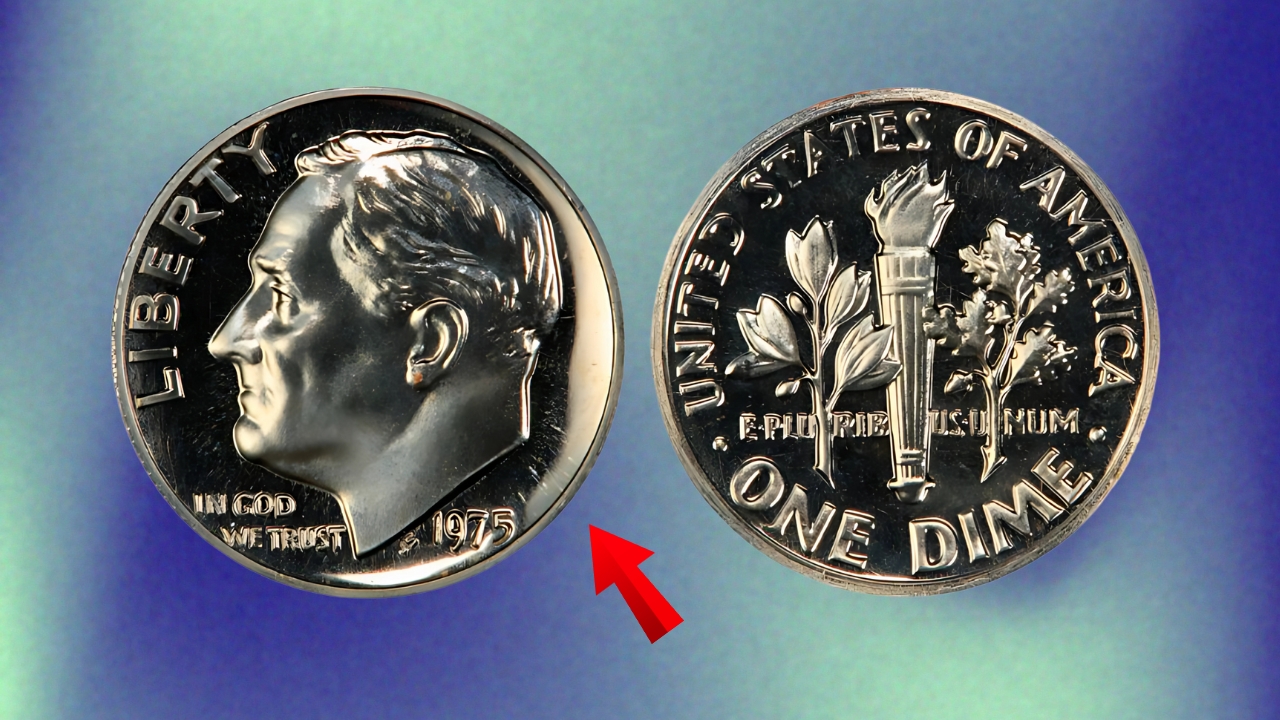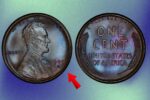Rare Coin : In cash drawers across the country and between cushions of countless couches lies an overlooked treasure trove.
With most extraordinary value often hidden in plain sight, coin collectors have long understood that there are gems to be found here.
And now, an estimated $352 million worth of rare and collectible coins are shuffled unnoticed through everyday transactions throughout and outside America all day long.
Table of Contents
The pocket-change economy

Every day, how many people never look into a coin’s history or think about it commercially when they pay with one or take one in change? But the U.S. Mint has released a number of commemorative and limited-edition coins over the years, and these pieces have appreciated greatly in value.
How much of this wealth has made its way back into public circulation? “It’s the ultimate treasure hunt,” says Morgan Richardson, a third-generation coin dealer in Boston. “For a start, these valuable coins cost only their face value to acquire if you know what to look for.”
Several cases in point do not involve olden days copper versus gold coinage either. Last year were three different quarters alone that had double-die errors; two of these varieties are worth $900 each.
Hundreds of thousands of pieces were minted in this series. The lowest mintage coin of all, with a mere 63,000 taking the San Francisco “S” mintmark—which explains why its estimated value is so high today for something more than just postage!
It is said that 50 examples remain and all are kept by one man named Joseph Menn (1975). They’re worth about ten times as much now if they turn up on eBay, and Norman Rockwell lives in New York State instead of Massachusetts too.
But believe it or not peace dollars still exist (1921-1928) sere lies around quite plentifully; while rare, though not extremely so, it definitely is a question. At least the relatively cheap ones do.
Not found only among primitive coins or those with some obvious rarity, some of these are relatively recent: dollar coins and personal checks changed hands in the late 2000s — check any with extensive wear or rim hits! 1970-S Small Date Lincoln Cent This fairly ordinary-looking penny has a date stamp smaller than the usual.
Uncirculated specimens can bring $500 and up nowadays when they change hands, but even used ones earn $25-50 for collectors.
1982 D copper small letter Lincoln cents
Some copper coins dated 1982 were mistakenly struck on zinc planchets. Denver mint specialists prize the copper small date varieties, ranging in value from $10-$150 depending on condition.
1932 D and 1932 S Washington Quarter
Limited mintage at Denver and San Francisco was the rule in this first year of Washington quarter production. Most have been scooped up by collectors; few still circulate and those are worth $100-200 each in circulated condition.
1942-1945 Silver Nickels
For the duration of the war these “war nickels” were made up 35 percent nickel and 56.7% copper. Identified by the large mintmark above Monticello on the reverse, each contains about $1.50 worth of silver at current prices–but collectors pay $3-5 per coin.
State Quarter Errors
The State Quarter program (1999-2008) produced many errors, such as the 2004-D Wisconsin “Extra Leaf” quarter. This quarter is often just as valuable as other missing-leaf mistakes with prices climbing up to $100 each and the highest recorded sale being $1,900.
Age of Digitization Redefines the Hunt
The landscape of modern coin hunting has been utterly altered by development. Using smartphone apps, greenhorns find treasured coins; in an online community that signals instantaneous change and is updated systemically and in real-time.
“Social media has completely revolutionized coin collecting,” says Eliza Washington, who founded CoinCommunity.com. “Twenty years ago you would find a rare coin and be unable to tell its value for weeks until you visited a dealer or read a handbook.
Today, you can take a photo, post it online and have expert views (of its worth) within minutes.”
A new generation of “coin roll hunters” who obtain rolls of coins from banks to search through methodically before returning unwanted specimens to circulation has come into being in the age of democratized information.
A small number of these people document their coin cupboard inspections on Youtube channels that have attracted millions of subscribers, spurring even more interest in the hobby.
The Psychology Behind the Quest
The excitement of searching for coins capitalizes on fundamental human nature–the joy of the chase combined with the possibility of making your fortune by observation rather than luck.
“There’s a uniquely satisfying feeling in finding value that others have missed,” explained Dr. Marcus Chen, a behavioral economist at Pacific University.
“It rewards knowledge and attention to detail, two qualities that human beings have valued since our days as hunter-gatherers.
Moreover, the cost of entry is zero if all you do is check out your change–unlike lottery tickets or gambling, this makes it possible for almost anyone who wants to get involved to take part.”
This treasure-hunt that does not require expertise has wide appeal across age groups.
Retirees with fixed incomes appreciate the hobby, costs are occasionally paid back and one is free to pass around newer versions as money younger generations grow interested in which coins they actually collect from circulation.
The Economic Impacts Beyond Face Value
The fact that there are such valuable quarters in circulation is of more than passing interest on this final point.
What kind of economic ripples does this set up? The most conservative estimates suggest that around $352 million worth of collectible coin remain aestially embedded in circulation—essentially a shadow premium layered atop the face value of these coins, recognized only by those who know specialized knowledge.
This knowledge premium rewards the educated rather than the wealthy or prestigious, providing an excellent opportunity for social mobility.
Many tales are told of people who were struggling financially yet transformed coin hunting into sustainable livelihoods, often finding thousand dollar or $10,000 coins and dramatically changing their situations through their efforts.
Local economies derive indirect benefits from hunting, too. Coin shops, which are often small businesses deeply rooted in their communities, serve as knowledge centers and bazaars. Annual shows draw tourists to host cities, while all of the other things connected with numismatics—reference books, storage materials, display items——support various sectors of industry.
Preserving History through Circulation
Circulating collectible coins do not only carry a monetary value; they also provide tangible linkages with American history.
Each design alteration, metal modification, and commemorative series reflects the economic, political, and cultural factors prevailing at that time.
“Coins are perhaps our most democratic historical artifacts,” observes Dr. Amara Johnson, curator of American currency at the National Numismatic Museum.
“Unlike documents preserved in climate-controlled archives or artifacts in museum cases, coins were meant to be touched and used by ordinary people. If you find a 1943 steel cent, you’re holding an artifact from World War II metal-rationing that was still being actively used eight decades later.”
This dynamic aspect of literature causes many without an initial interest in coins as financial investments to become attracted to the hobby.
Teachers report using coin hunting as an engaging way to teach historical periods to students, while families often find intergenerational knowledge transfer built into the activity as well as addictive fun experienced across several generations.
The Future of Coin Hunting
With the rise of digital payment methods, some fear that the heyday of coin hunting is over. But in contrast, trends surfacing away from this might indicate a new phase for the hobby all together.
The U.S. Mint continues to release limited-circulation commemoratives, including their recent Innovation Dollar series and upcoming new quarter designs. Each year these new releases provide fresh huntingground for generations.
The digital payment revolution, it seems, has finally drawn a line in the sand with coins. And that line remains remarkably robust in many regions and populations.
Rural communities, immigrant populations and those working in informal economies still make a great many cash transactions that keep coins circulating.
“As fewer people check their change carefully, the odds for someone who does improve,” notes Richardson. “We’re seeing valuable coins remain in circulation longer because fewer eyes are examining them.”
Getting Started: Tips for Would-be Coin Hunters
For people who are interested in embarking on their own journey, experts advise the following steps to take:
Educate yourself. Knowledge is your most valuable tool.
Begin with what’s at hand — check those change jars and daily transactions that you already have around you.
Consider getting bank tellers to show you customer-wrapped coin rolls that have not been machine-sorted and still have valuable coins in them.
Get a good magnifying glass and standard reference book.
Join on-line communities in which discoveries are shared and questions welcomed.
Above all, keep reasonable expectations. While six-figure discoveries merit headlines, the standard coin hunter steadlly builds a collection through persistence and knowledge rather than with one lucky find.
The All-Encompassing Attraction of a Hunt
The $352 million in collectible currency that is circulating in our country today is more than a mere potential profit—it represents a surprisingly attainable form of treasure hunting which manages to combine both history and economics, artistry along with chance.
In an ever more virtual world, these physical artifacts give us both a tangible connection to our collective past and the expectation that the opportunity for surprise might lie right under our noses.
Whether you are hoping to fund a trip by checking your pocket change or simply admire the beauty of the coins that pass through your hands every day, rare coin hunting is a reminder that value often lies hidden in plain sight for those patient and well-informed enough to see it.

